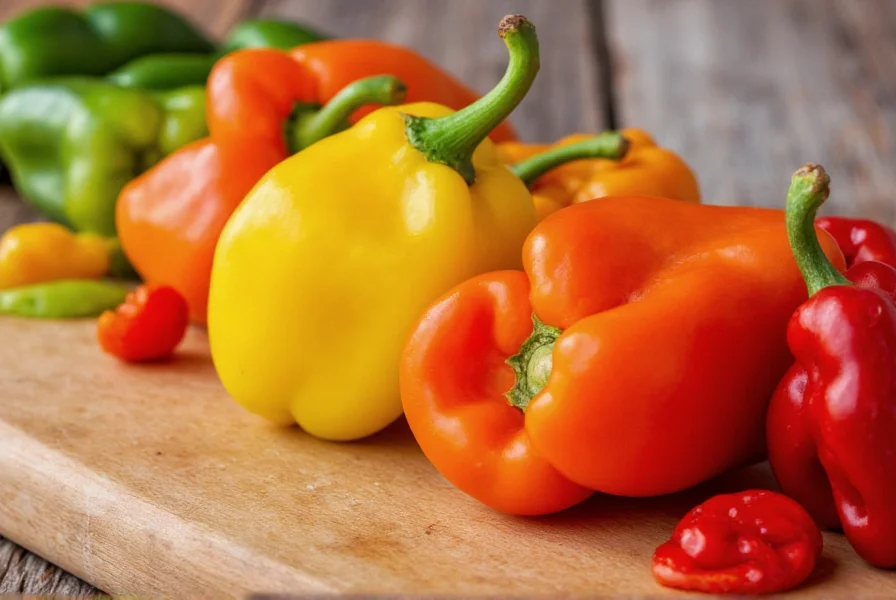Understanding pepper heat levels transforms your culinary experience from guesswork to precision. Whether you're a home cook experimenting with new recipes or a food professional developing products, knowing exactly how spicy your ingredients will be is essential. The Scoville scale provides this critical information through a scientifically validated measurement system that has evolved significantly since its creation in 1912.
The Science Behind Pepper Heat
Chili heat comes from capsaicinoids, primarily capsaicin, which trigger heat receptors in your mouth and skin. These compounds evolved as a defense mechanism for the pepper plant against mammals. The concentration of capsaicinoids determines a pepper's position on the Scoville scale. Higher concentrations mean more Scoville Heat Units and greater perceived heat.
Originally, the Scoville Organoleptic Test measured heat through human taste panels who diluted pepper extracts until the heat became undetectable. Today, high-performance liquid chromatography (HPLC) provides precise, objective measurements of capsaicinoid concentration, which are then converted to Scoville Heat Units for consumer understanding.
| Pepper Variety | Scoville Heat Units (SHU) | Heat Level Description |
|---|---|---|
| Bell Pepper | 0 SHU | No heat |
| Pepperoncini | 100-500 SHU | Mild |
| Jalapeño | 2,500-8,000 SHU | Moderate |
| Serrano | 10,000-23,000 SHU | Medium-Hot |
| Habanero | 100,000-350,000 SHU | Very Hot |
| Ghost Pepper (Bhut Jolokia) | 800,000-1,041,427 SHU | Extremely Hot |
| Carolina Reaper | 1,400,000-2,200,000 SHU | World's Hottest |
Practical Applications in Cooking
Knowing the Scoville ratings of different peppers helps you create balanced dishes without unexpected heat surprises. When substituting peppers in recipes, understanding their relative heat levels prevents culinary disasters. For example, replacing jalapeños (2,500-8,000 SHU) with habaneros (100,000-350,000 SHU) without adjustment would make a dish 12-40 times hotter than intended.
Heat isn't distributed evenly throughout a pepper. The highest concentration of capsaicin appears in the placenta (the white ribs inside the pepper), not the seeds as commonly believed. When preparing peppers, removing these white membranes significantly reduces heat while preserving flavor.

Modern Measurement Techniques
While the Scoville scale remains the consumer standard, modern laboratories use high-performance liquid chromatography (HPLC) for precise capsaicinoid measurement. This method separates and quantifies the specific capsaicin compounds, then converts the results to Scoville Heat Units using a mathematical formula.
This scientific approach eliminates the subjectivity of the original taste-test method, which varied based on taster sensitivity and fatigue. HPLC provides consistent, reproducible measurements that food producers and researchers rely on for quality control and product development.
Safety Considerations with Hot Peppers
Working with extremely hot peppers requires precautions. Capsaicin can cause severe irritation to eyes, skin, and mucous membranes. Always wear gloves when handling hot peppers, especially super-hots like the Carolina Reaper. Never touch your face while preparing peppers, and wash hands thoroughly with soap afterward.
If you experience burning sensations, dairy products like milk or yogurt provide relief by binding to capsaicin molecules. Avoid water, which spreads the oil rather than neutralizing it. For severe reactions, seek medical attention immediately.

Common Misconceptions About Pepper Heat
Several myths persist about chili heat measurement. Many believe that smaller peppers are always hotter, but size doesn't directly correlate with heat level. Environmental factors like soil conditions, water, and sunlight significantly affect a pepper's actual heat, causing natural variation even within the same variety.
Another misconception suggests that seed removal eliminates heat, but as mentioned earlier, the heat primarily resides in the placenta. Seeds can become coated with capsaicin during handling, but they contain minimal heat themselves.
Using the Scale for Culinary Innovation
Chefs and food developers use the Scoville scale to create balanced heat profiles in dishes. Understanding the precise heat level allows for controlled layering of spice that builds gradually rather than overwhelming the palate. This knowledge enables the creation of complex flavor experiences where heat complements rather than dominates other flavors.
When developing new products, food scientists carefully select peppers based on their Scoville ratings to achieve consistent heat levels across batches. This precision has led to the creation of specialty products like heat-controlled hot sauces and pepper-infused foods with predictable spice profiles.
Frequently Asked Questions
What is the difference between Scoville units and SHU?
Scoville units and SHU (Scoville Heat Units) refer to the same measurement system. SHU is simply the abbreviated form commonly used when discussing pepper heat levels. Both terms describe the same scale that measures the concentration of capsaicinoids in chili peppers.
How hot is 1,000,000 Scoville units?
One million Scoville units represents extreme heat, approximately 125 times hotter than a typical jalapeño (8,000 SHU). Peppers at this level, like the Ghost Pepper, cause intense burning sensations that can last for hours. Only experienced consumers of spicy foods should attempt peppers in this range, and even then with extreme caution.
Can the Scoville scale measure non-pepper spicy foods?
Yes, the Scoville scale applies to any food containing capsaicinoids, including hot sauces, spicy snacks, and prepared foods. Manufacturers often list Scoville ratings for hot sauces to help consumers understand their heat level. However, the scale doesn't measure the heat from non-capsaicin sources like black pepper (piperine) or wasabi (allyl isothiocyanate).
Why do Scoville ratings have such wide ranges for single peppers?
Scoville ranges reflect natural variation in capsaicin production. Factors including growing conditions, soil composition, water availability, and sunlight exposure significantly impact a pepper's heat level. Even peppers from the same plant can vary in heat. The ranges represent typical measurements across multiple samples under various conditions.
How can I build tolerance to spicy foods?
Building spice tolerance requires gradual exposure. Start with milder peppers like poblanos (1,000-2,000 SHU) and slowly progress to hotter varieties. Regular consumption trains your pain receptors to become less sensitive to capsaicin. Always pair spicy foods with dairy products which contain casein that helps neutralize capsaicin. Never rush the process, as this can lead to digestive discomfort.










 浙公网安备
33010002000092号
浙公网安备
33010002000092号 浙B2-20120091-4
浙B2-20120091-4